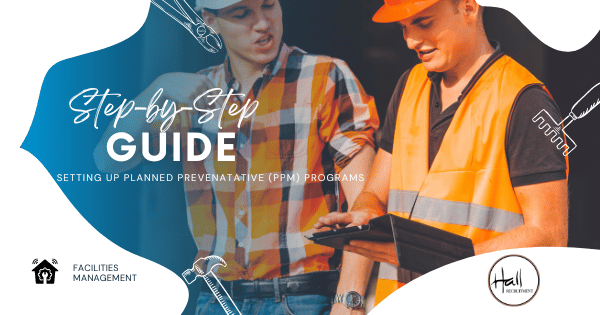
- What are Planned Preventative Maintenance (PPM) Programs?
- Develop a plan for preventive maintenance.
- Identify potential problems that need to be addressed.
- Assign resources and lay out a timeline for the project.
- Establish organizational roles and responsibilities for the program.
- Choose an appropriate Maintenance System or Computerized Maintenance Management System (CMMS).
What are Planned Preventative Maintenance (PPM) Programs?
Planned preventative maintenance (PPM) programs are designed to proactively maintain and monitor your machinery, equipment and systems so they operate reliably and efficiently. This step-by-step guide will walk you through how to develop a comprehensive PPM system that can help save time, money, and energy.
Develop a plan for preventive maintenance.
Creating an effective plan for preventive maintenance involves steps such as defining objectives and outlining maintenance tasks. It’s important to create a detailed schedule that outlines the times when particular pieces of equipment need to be serviced, as well as what type of service needs to be done. Additionally, you will want to establish protocols for detecting any possible defects in machinery and safely responding to them. Having a comprehensive plan in place will help ensure that you are able to keep your machinery running smoothly without any unexpected breakdowns or repairs.
Identify potential problems that need to be addressed.
Part of creating an effective preventive maintenance plan involves identifying potential problems that could affect the performance of your machinery. This can be done by consulting with experienced technicians and engineers, who can help you diagnose issues that may arise in the future. Additionally, they can advise you on the best way to respond to any detected problems, such as promptly addressing them before they cause bigger issues down the line.
Assign resources and lay out a timeline for the project.
Once you and your technicians have identified areas that need to be addressed, you must assign resources to the project and decide how much time they will have to complete it. Assigning a responsible person is critical, as they will keep track of tasks, set deadlines, and make sure everyone involved is on the same page. You should also establish priorities based on the identified problems, with urgent items needing to be handled first.
Establish organizational roles and responsibilities for the program.
As part of a Planned Preventative Maintenance program, it’s important to establish clear roles and responsibilities for who will be involved. This includes designating personnel responsible for identifying maintenance tasks, assessing risks, scheduling inspections, performing repairs or replacements, and making sure the system is in compliance with regulations. Having everyone organized and on the same page makes it easier to get the job done efficiently and effectively.
Choose an appropriate Maintenance System or Computerized Maintenance Management System (CMMS).
When it comes to maintenance programs, there is a variety of software solutions that can be used to track and manage the maintenance process. Choosing a computerized Maintenance Management System (CMMS) like iMaint or MPulse will enable you to plan, schedule, execute and monitor activities, as well as provide detailed analysis for better decision-making. This type of system also allows you to capture and store data about assets, labor costs, resources and more so that you have access to all the necessary information in one place.
Hall Recruitment is committed to matching our candidates to professional employers which match eachothers professional goals and can enhance eachothers professional experiences. Check out latest job opportunities in facilities management, human resources, logistics, accounting and finance, office support and administration, and project management.
